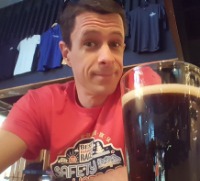
Commander Fayne said: So keep using the old Dynamic Lighting system, because the new one kills established features, *still*. Got it. I'm not going to use a dummy account to check what my monsters truly see, or to check what my player sees to judge things like cover and line of sight when they ask me to. This is not a fix for my issue, though I appreciate your suggestion. Old LDL never had this strange hard boundary on light sources, and works completely fine with CTRL+L. I am so frustrated with roll20 devs adding new stuff that's broken, has reduced usability, and also lets their established, working stuff fall to disrepair. This is a pretty common theme here. Using a Dummy Account was a common suggestion before UDL was even a dream. Ctrl-L has limitations. It doesn't provide an accurate experience even under LDL. For instance, the GM layer still displays and Advanced Fog of War can show unexpected results. It sounds like Kraynic has answered the question about feathered edges? Here is the player experience of the settings you have shown. Here is a normal sighted character facing a torch that shines for 2 Bright, 18 Low. Here is the same character but with a 200% multiplier. It looks slightly different under LDL, but this is to be expected, using two different rendering systems. However, they are functionally identical. LDL Normal LDL with a x2 multiplier If one had to describe the difference, I would say that UDL is more naturalistic and LDL is more "gameristic". LDL shows the demarcation between bright a dim a little more clearly at the default settings (this can be tweaked in UDL), while UDL is more immersive. But in terms of game play, any differences are minor.





